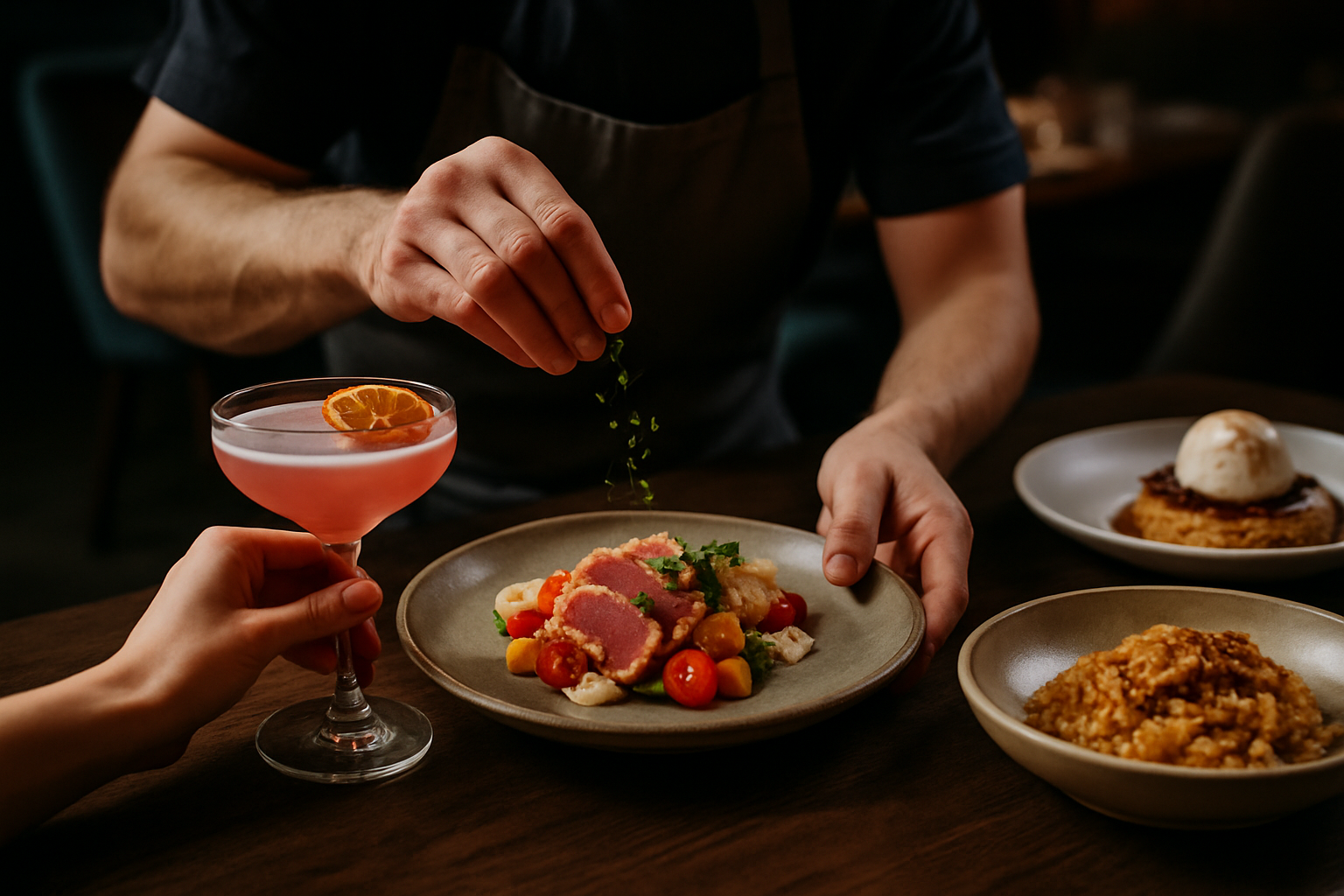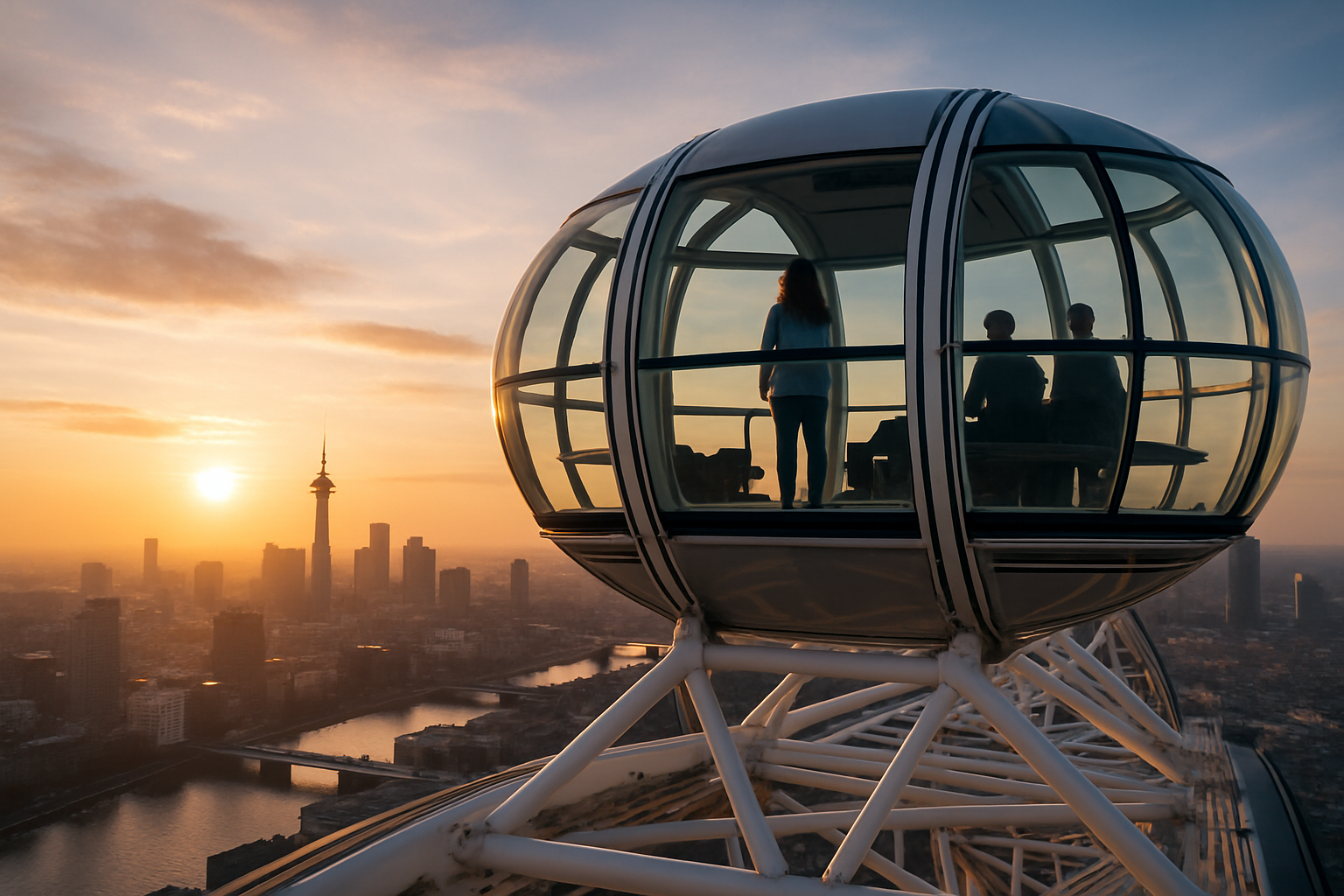Culinary Alchemy: Edible Mists and Aromatic Clouds
Imagine savoring the essence of a dish without a single bite. Welcome to the world of edible mists and aromatic clouds, where flavor becomes ethereal and dining transforms into a multisensory adventure. This innovative culinary trend is captivating food enthusiasts and chefs alike, offering a unique way to experience taste and aroma. From cocktail bars to haute cuisine restaurants, these flavorful vapors are adding a touch of magic to the dining experience, challenging our perceptions of how we consume and enjoy food.

The Science Behind Edible Mists
Edible mists are created through a process called ultrasonic vaporization. This technique uses high-frequency sound waves to break down liquid ingredients into a fine, fog-like mist. The result is a cloud of flavor particles that can be inhaled or allowed to settle on the tongue, delivering an intense burst of taste without the need for solid or liquid forms. This method allows for the separation of flavor from texture, opening up new possibilities in gastronomy.
The science behind these aromatic clouds is rooted in the connection between smell and taste. Our olfactory system plays a crucial role in how we perceive flavor, with up to 80% of what we taste coming from our sense of smell. By isolating and amplifying aromas, edible mists tap into this sensory pathway, creating a more intense and focused flavor experience. This phenomenon is similar to how wine connoisseurs swirl their glasses to release aromatic compounds, but taken to a whole new level.
Flavor Profiles and Possibilities
The world of edible mists offers an almost limitless array of flavor possibilities. From savory to sweet, subtle to bold, chefs and mixologists are experimenting with a wide range of ingredients to create their aromatic clouds. Popular flavors include familiar favorites like chocolate, vanilla, and citrus, as well as more adventurous options like truffle, saffron, and even smoke.
One of the most exciting aspects of this trend is the ability to layer and combine flavors in unique ways. For example, a dessert might be accompanied by a strawberry mist that enhances the fruit’s aroma, followed by a vanilla cloud that adds depth and complexity to the overall experience. In cocktails, aromatic clouds can be used to add an extra dimension to the drink, such as a gin and tonic paired with a juniper mist to amplify the gin’s botanical notes.
Applications in Fine Dining
High-end restaurants are embracing edible mists as a way to elevate their culinary offerings and create memorable dining experiences. Chefs are using these aromatic clouds to add an element of surprise and interactivity to their dishes. For instance, a seafood course might be presented with a sea breeze mist, evoking the sensory experience of dining by the ocean.
Some restaurants are taking the concept even further by creating entire courses centered around edible mists. These “cloud courses” often involve multiple flavors presented in succession, allowing diners to experience a progression of tastes and aromas without consuming any solid food. This approach not only challenges traditional notions of what constitutes a meal but also offers a unique solution for those with dietary restrictions or texture sensitivities.
Cocktail Revolution: Mists in Mixology
The world of mixology has been quick to adopt edible mists, using them to create innovative and Instagram-worthy cocktails. Bartenders are employing aromatic clouds to add complexity to drinks without altering their liquid composition. This technique allows for the introduction of flavors that might not blend well in liquid form or that would overpower the drink if added directly.
One popular application is the use of mists as a garnish or finishing touch. For example, a classic martini might be served with a spritz of vermouth mist, allowing the drinker to control the level of dryness by inhaling more or less of the aromatic cloud. Some bars are even creating signature scents that are misted over drinks to enhance the overall sensory experience and create a memorable brand identity.
DIY Edible Mists: Bringing the Trend Home
As this culinary trend gains popularity, home cooks and cocktail enthusiasts are finding ways to incorporate edible mists into their own creations. While professional-grade ultrasonic vaporizers can be expensive, there are more affordable options available for home use. These devices allow food lovers to experiment with creating their own aromatic clouds, adding a touch of molecular gastronomy to home-cooked meals and dinner parties.
For those interested in trying edible mists at home, it’s important to use food-grade ingredients and follow proper safety guidelines. Many recipes start with a base of vodka or neutral grain spirit, which helps to carry the flavors and creates a stable mist. Essential oils, extracts, and even some fresh ingredients can be used to create a wide range of flavors, from herbs and spices to fruits and florals.
Flavor Facts and Mist Tips
• Edible mists can contain up to 80% fewer calories than their liquid counterparts.
• The average person can distinguish between 4,000 to 10,000 different odor molecules.
• Aromatic clouds can be used to enhance the flavors of low-sodium or sugar-free dishes.
• Some restaurants are using scent diffusers to create an immersive dining atmosphere.
• Edible mists can be a creative solution for adding flavor to dishes for those with swallowing difficulties.
As the culinary world continues to push boundaries and explore new frontiers, edible mists and aromatic clouds stand out as a truly innovative way to experience food and drink. By separating flavor from form, this trend challenges our preconceptions about dining and opens up exciting possibilities for chefs, mixologists, and food enthusiasts alike. Whether you’re enjoying a cloud-enhanced meal at a high-end restaurant or experimenting with mists in your own kitchen, this ethereal approach to flavor is sure to spark your culinary imagination and tantalize your taste buds in ways you never thought possible.





